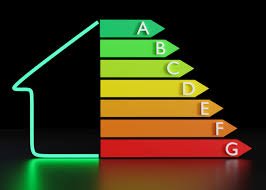Energy Performance Certificates have evolved from bureaucratic requirements into influential market factors that significantly affect property valuations across all sectors of the UK housing market. What began as environmental compliance documentation now serves as a crucial indicator of property quality, running costs, and future marketability that professional valuers and potential buyers scrutinise carefully when assessing property worth.
The relationship between EPC ratings and property values has strengthened considerably as buyers become increasingly sophisticated about energy costs and environmental credentials. Rising utility prices have intensified focus on energy efficiency, making properties with superior ratings more desirable whilst those with poor ratings face mounting market resistance. When considering any property investment or sale, it’s essential to book a property valuation that takes current EPC ratings into account, ensuring you understand how energy performance affects your property’s market position and financial potential.
Understanding the EPC Rating System
Energy Performance Certificates rate properties from A (most efficient) to G (least efficient), providing standardised assessments that enable meaningful comparisons between different properties. These ratings consider multiple factors including insulation quality, heating systems, window efficiency, and renewable energy installations that collectively determine overall energy performance.
https://www.fineandcountry.co.uk/value-my-property/home-visit-valuationThe scoring methodology assigns numerical values between 1 and 100, with A-rated properties scoring 92 or above whilst G-rated properties score 20 or below. This precise scoring enables subtle distinctions within rating bands that can influence valuation assessments even when properties share the same letter grade.
Annual energy cost estimates accompany EPC ratings, providing concrete financial information that buyers can factor into affordability calculations and long-term ownership budgets. These estimates help quantify the financial implications of different efficiency levels in ways that resonate with cost-conscious purchasers.
Direct Valuation Impact Mechanisms
Property valuers increasingly adjust their assessments based on EPC ratings, recognising that energy efficiency affects both immediate marketability and long-term capital appreciation potential. Research consistently demonstrates that properties with superior ratings achieve higher prices per square foot compared to less efficient alternatives.
Premium calculations vary by location and property type, but A and B-rated properties typically command 5-10% price premiums compared to equivalent D-rated homes. This premium reflects both reduced running costs and enhanced market appeal that attracts environmentally conscious buyers willing to pay more for efficient properties.
Discount factors apply to properties with poor ratings, with F and G-rated homes often achieving 5-15% below market averages due to buyer concerns about running costs and potential improvement requirements. These discounts reflect market recognition that inefficient properties impose ongoing financial burdens that affect total ownership costs.
Market Dynamics and Buyer Behaviour
Buyer filtering increasingly occurs at the EPC rating level, with many purchasers eliminating properties below certain efficiency thresholds before viewing or making offers. This filtering reduces the potential buyer pool for inefficient properties whilst creating competition for those with superior ratings.
Time-on-market statistics demonstrate that properties with good EPC ratings typically sell faster than less efficient alternatives, reducing marketing costs whilst enabling better price achievement through competitive bidding situations that favour sellers of efficient homes.
Mortgage availability can be affected by EPC ratings, with some lenders offering preferential terms for efficient properties whilst others restrict lending on properties with very poor ratings. These financing implications affect both purchase feasibility and refinancing options throughout ownership periods.
Regional and Property Type Variations
Urban markets often demonstrate stronger EPC rating sensitivities due to higher energy costs and greater environmental awareness among city dwellers who prioritise sustainability alongside other property characteristics. Rural areas may show different patterns based on heating fuel availability and local market conditions.
Period properties face particular challenges, as older buildings often achieve poor EPC ratings despite significant heritage value and market appeal. However, well-executed efficiency improvements can transform these ratings whilst enhancing comfort and reducing operating costs substantially.
New build properties typically achieve excellent EPC ratings through modern construction standards and renewable energy installations, creating competitive advantages that affect pricing and market positioning compared to older housing stock requiring efficiency improvements.
Improvement Investment Returns
Energy efficiency investments often provide attractive returns through enhanced property values that exceed improvement costs, particularly for properties with very poor initial ratings where relatively modest investments can achieve significant rating improvements.
Insulation upgrades represent cost-effective improvements that typically enhance EPC ratings whilst providing immediate comfort benefits and reduced heating costs. Loft and cavity wall insulation often pay for themselves through energy savings whilst contributing to valuation increases.
Heating system modernisation can dramatically improve EPC ratings whilst reducing ongoing costs and maintenance requirements. Efficient boilers, smart controls, and renewable heating technologies provide multiple benefits that justify investment costs through improved comfort and enhanced property values.
Future-Proofing and Regulatory Considerations
Minimum energy standards continue evolving, with government proposals suggesting that properties must achieve minimum EPC ratings for sale or rental in future years. These potential requirements make current efficiency improvements valuable insurance against future compliance costs.
Building regulations increasingly emphasise energy performance, meaning new construction and major renovations must meet higher efficiency standards that create growing gaps between new and old housing stock unless existing properties receive upgrades.
Carbon reduction targets influence government policy towards energy efficiency, suggesting continued regulatory pressure that will maintain or increase the importance of EPC ratings for property marketability and valuation assessments.
Professional Valuation Considerations
RICS guidance encourages valuers to consider energy efficiency when assessing properties, recognising that EPC ratings affect both market value and investment potential through their impact on running costs and buyer demand patterns.
Comparable evidence increasingly includes EPC rating analysis, with valuers examining how efficiency levels affect achieved prices within specific market areas and property types to ensure accurate reflection of energy performance in valuation assessments.
Investment valuation models incorporate energy costs and efficiency levels when calculating rental yields and capital appreciation potential, recognising that efficient properties often achieve better tenant demand and higher rents than less efficient alternatives.
Cost-Benefit Analysis of Improvements
Improvement prioritisation should focus on measures providing the greatest EPC rating enhancement for the lowest cost, typically including insulation, draught-proofing, and heating controls that deliver immediate benefits whilst improving certification scores.
Payback calculations must consider both energy savings and valuation increases when assessing improvement viability, as the combined benefits often justify investments that might not be viable based solely on utility bill reductions.
Staged improvement approaches enable gradual efficiency enhancement that spreads costs whilst building experience and confidence in renovation benefits before undertaking more substantial or expensive upgrade projects.
Market Communication and Presentation
Marketing strategies should prominently feature good EPC ratings whilst positioning efficiency improvements as value-adding features that justify premium prices compared to less efficient alternatives within local markets.
Energy cost comparisons help buyers understand the financial implications of different efficiency levels, demonstrating how improved ratings translate into reduced monthly expenses that affect affordability calculations and long-term ownership satisfaction.
Professional advice helps sellers understand which improvements provide the best return on investment whilst ensuring that efficiency enhancements align with broader property improvement strategies that maximise overall market appeal.
Technology Integration and Smart Home Features
Smart home technology integration often improves EPC ratings whilst appealing to tech-savvy buyers who appreciate automated energy management systems that optimise consumption patterns and reduce waste through intelligent control systems.
Renewable energy installations including solar panels and battery storage systems can dramatically improve EPC ratings whilst providing long-term energy cost reductions that appeal to environmentally conscious buyers seeking sustainable homes.
Monitoring systems enable homeowners to track energy usage and efficiency improvements, providing data that supports EPC rating enhancement whilst demonstrating the financial benefits of energy efficiency investments to potential buyers.
Investment Property Implications
Rental property EPC requirements affect landlord obligations and tenant appeal, with efficient properties commanding premium rents whilst poor ratings may face future rental restrictions that affect investment viability and exit strategies.
Portfolio considerations should include EPC rating distribution analysis, ensuring investment properties meet current and anticipated efficiency standards that support sustainable rental income and capital appreciation potential.
Long-Term Strategic Planning
Property owners should develop efficiency improvement strategies that consider current market conditions alongside future regulatory requirements and buyer expectations that continue emphasising environmental performance and energy cost control.
The growing importance of EPC ratings in property valuation reflects fundamental market shifts towards sustainability and cost consciousness that appear likely to intensify rather than diminish, making energy efficiency improvements valuable long-term investments in property marketability and financial performance.







